Saturday, August 31, 2013
Skocjan Caves, Slovenia / Motovun and Rovinj, Croatia
Today we leave Slovenia. Oh, no! I love it here. But first
another big plate of eggs, cold cuts, and cheese for the road.
At 11:00 we checked out, settling our bill with a credit card.
Notably, this is the only accommodation of the trip that accepts
plastic. Once we got to Croatia, it was cash only. I don't know if
they're hiding income from the government or what. We ran into the
cash-only policy at many of the restaurants in Croatia as well.
That's a lot of kuna we had to carry around.
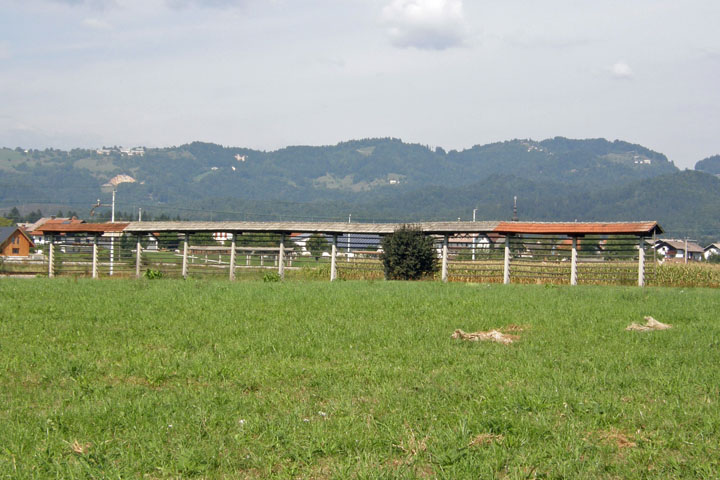
Ubiquitous hay rack,
Slovenia
On our way out of Slovenia today, we're stopping in karst country,
famous for its caves. It took us an extra hour to get past
Ljubljana on this Saturday. The A1 was jammed with German tourists,
their cars loaded down with gear. They were probably headed to the
coast for the week for an end-of-summer blowout.
We made it to Park Skocjanske jame just in time for the 1:00 tour
of the Skocjan Caves. The tour starts with a 10-minute
walk to the entrance, where they split everyone into two language
groups, English or Italian. Not enough Slovenian-only speakers, I
guess, to even bother! The tour takes about an hour and a half. You
walk 3 kilometers through the caves and traverse 500 steps. No
photos are allowed in the cave, so I only took a couple.
The tour begins in the Silent Cave, a series of dry caves with cool
formations and impressive large caverns. Then you continue into the
Murmuring Cave, a wet cave with growing formations, each cavern
more impressive than the last, with a huge underground river, the
Rika, running through it! Near the end, you reach the tallest
cavern in Europe, where you cross a bridge 150 feet above the
river. I felt like I was in an Indiana Jones movie.
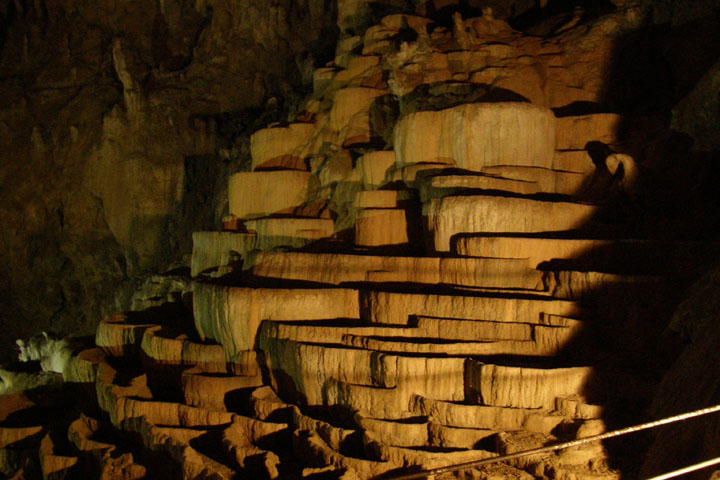
Inside Skocjan
Caves
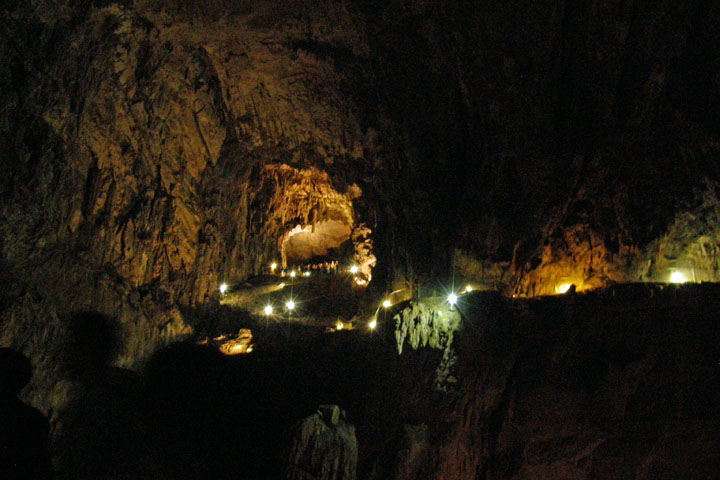
Inside Indiana Jones and
the Last Crusade
You emerge from the cave at the bottom of a vast sinkhole with
waterfalls and lush vegetation. It takes at least another half hour
to hike steeply back uphill to where you first began. There is a
funicular for a small assist in regaining altitude, but it's a
pretty strenuous hike just getting to it. You can then walk over to
a viewing area overlooking Velika Doline, the giant
sinkhole/collapse doline that you just climbed out of. These might
be the coolest caves we've ever visited!
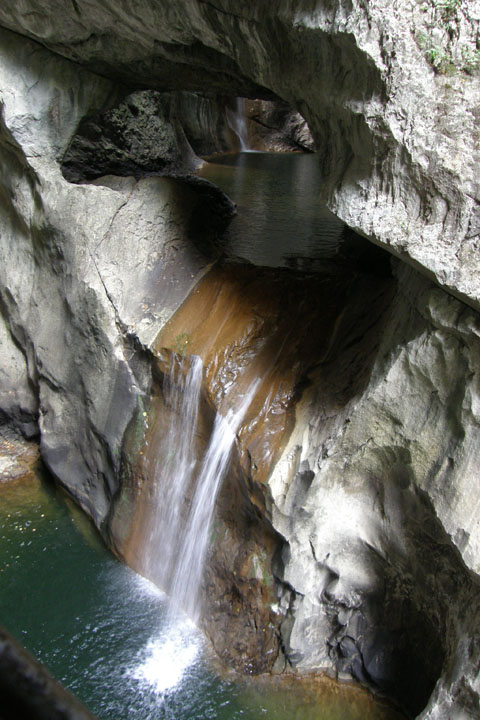
Exiting the caves,
inside Velika Doline
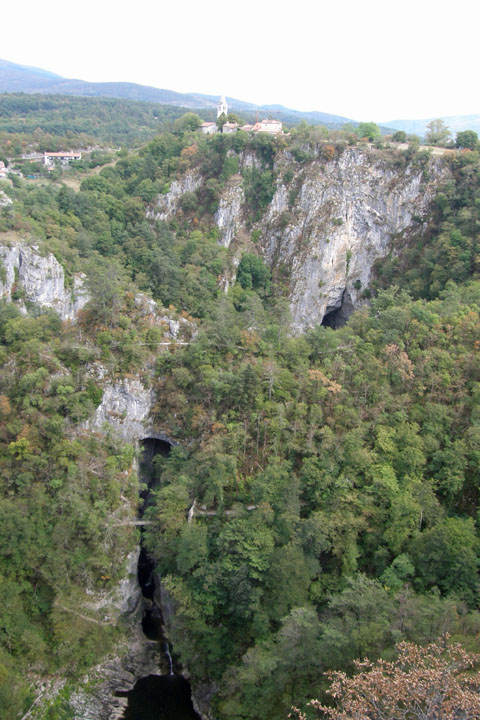
Velika Doline from
above
We crossed the border at Socerga, Slovenia / Pozane, Croatia, into
the region of Istria, a large peninsula jutting into the Adriatic
at the northwest end of Croatia. Over the years, Istria has been
controlled by Illyrians, Romans, Byzantines, Slavs, Venetians, and
Austrians. After World War I, Istria became part of Italy. Then
after World War II, Istria joined Yugoslavia, until 1991, when
Croatia declared its independence. There's still a large Italian
community in residence, and Italian is the second language on the
peninsula.
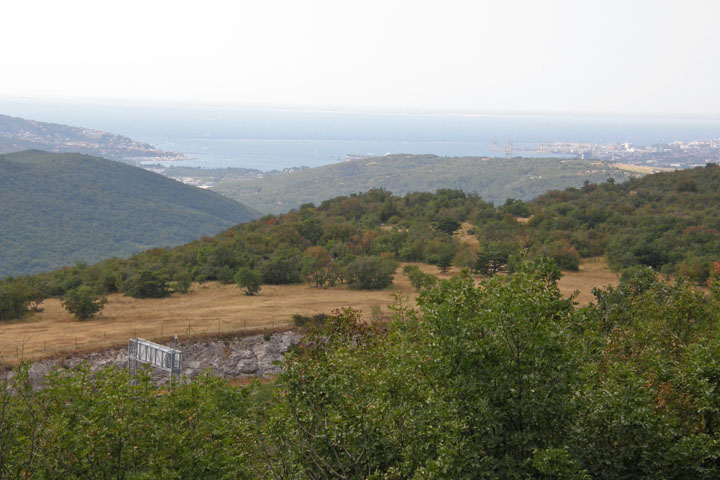
Our first glimpse of the
sea
Motovun is a picturesque little hilltop town (population 983) in
central Istria. As one of the benefits of traveling in shoulder
season, we were lucky enough to park near the top of the hill. If
it was peak tourist season, we'd have been in for another long,
steep hike. From the top of the medieval town walls, we had a
sweeping view of the surrounding countryside, with olive trees, fig
trees, and vineyards as far as the eye could see.
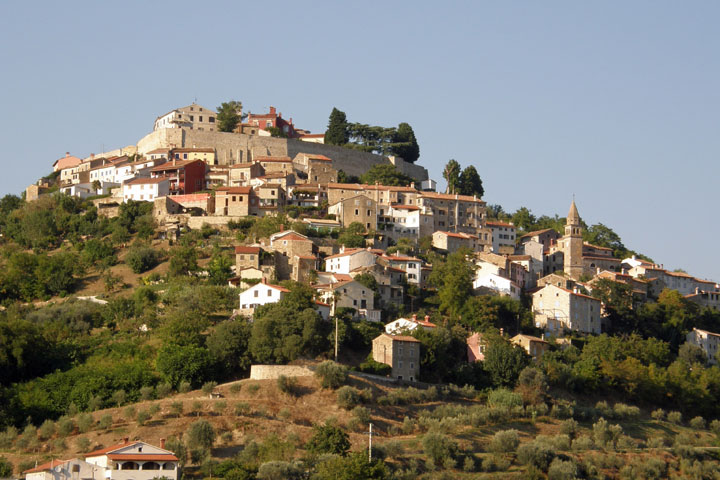
Motovun,
Croatia
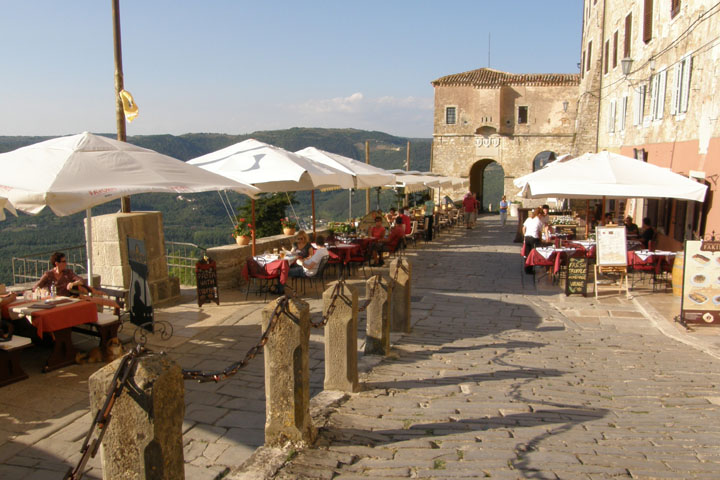
Cafe
culture
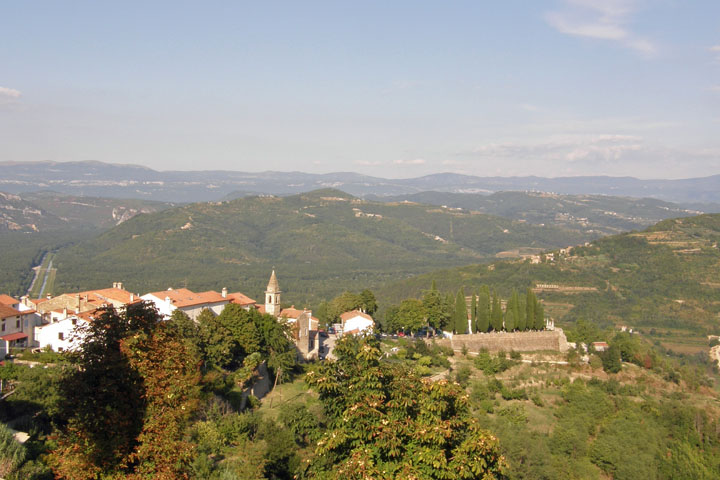
View from Motuvun town
walls
For the most part, there are two kinds of accommodations for
visitors to Croatia, expensive high-end hotels or reasonably priced
private apartments/rooms called sobe. Prices for the sobe
throughout our stay in Croatia ranged from $47 to $67 per night.
Hotels would have cost a LOT more.
Tonight we're staying in Rovinj, a port city on the west coast of
Istria, just across the Adriatic from Venice, at Apartment Suran.
We drove right to the address but still couldn't spot the place.
With the help of three different neighbors, we were directed to the
side door of a building, behind a pizzeria, where we found the word
“Suran” written in very small print above a buzzer. We buzzed in
and were shown to our apartment for the night. We'd reserved only a
room, but the owner showed us to a full apartment. He explained
that though we'd have the apartment to ourselves, to please not use
the kitchen since we weren't paying extra for it. I used the fridge
anyway.
After a while, we walked the mile or so to the Old Town, getting
there just after dark. Rovinj is wonderfully charming, with a
harbor packed with boats, lovely old buildings right on the water,
and narrow, winding, cobblestone streets and alleys to wander. Now
I feel like I've been to old Italy. We spent a couple of hours
wandering up and down the cobblestone lanes, listening to street
musicians and enjoying the ambiance.
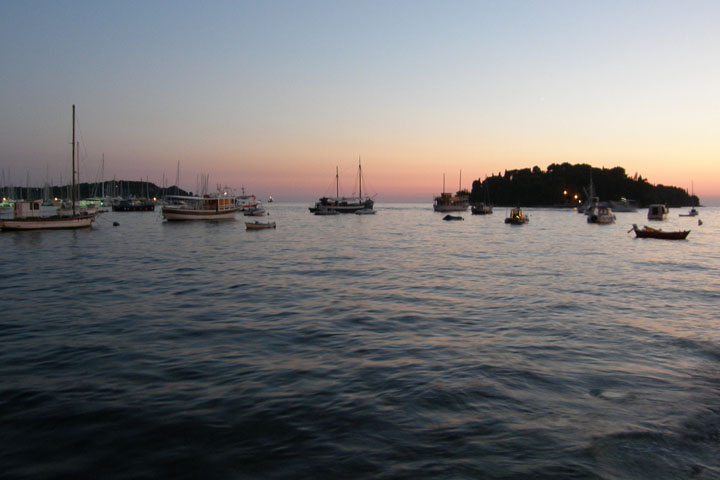
Romantic
Rovinj
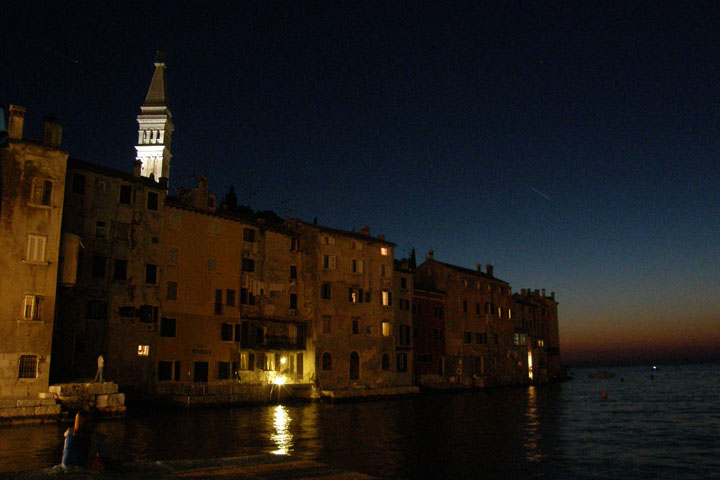
Very
Venetian
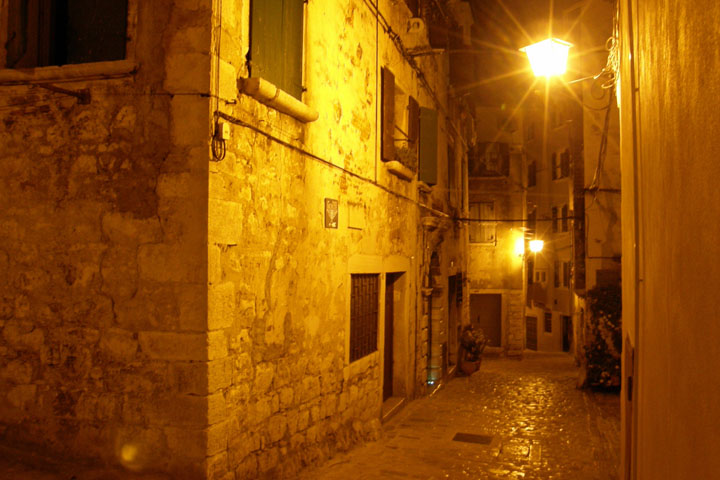
Old Italy or current
Croatia?
The restaurants in the Old Town were expensive and uninspiring, so
we found a place to eat on the way back to our soba, Restaurant
Pineta. Lots of locals were eating here, always a good sign. Tom
ordered a pizza with ham, and I ordered “mixed meat” and fries.
Again, I thought I might get something exotic, but the mixed meat
was a pork chop, another piece of pork, a small hamburger patty,
and two small ground-beef sausages. Good and greasy! The meat was
served with a yummy condiment called ajvar, made from mashed
roasted red peppers and eggplant. The food was good. The Ozujsko
Toceno beer was average.
We got back to the apartment around midnight, stopping first to
pick up a bottle of “Marco Polo” red wine at the supermarket next
door. I really wanted some more of that blueberry fortified wine
like we'd had in Slovenia, but I never found it again.
|











